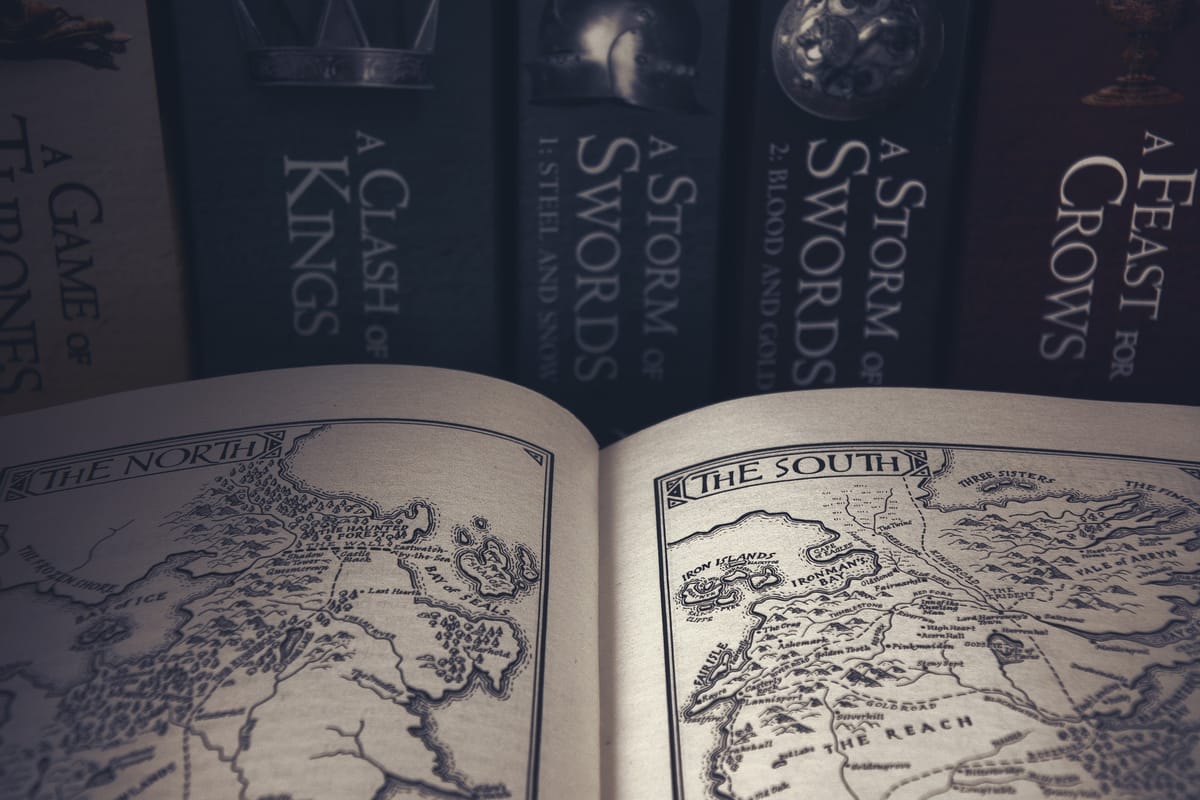Memory System Part 3: Imaginary World

In the first and second parts of this series I have discussed the advantages of a memory system as well as proposed a simple technique for organising thinking. A particular focus of the presented technique was to provide a very lightweight way to order thoughts, with minimal requirements to adorn what we want to remember with artificial memory images. However, enriching our thoughts with images can have a number of advantages such as aid our memory or bring more beauty and inspiration to our thoughts.
I am proposing here a second technique that focusses on unlocking our imagination and building imaginary worlds that we can use to convey meaning and ideas in a form that memorable and engaging for ourselves and others. Specifically, this technique suggests to build imaginary worlds in four layers. I will each cover each layer in the below. I will conclude with an example tying all four layers together.
Layer 1: Landscape
We can project the ideas and concepts that we want to communicate or that we want to think about on a landscape. We can break a landscape down into different distinct components that make it easier to shape our thoughts:
- Planets
- Continents
- Mountains
- Rivers
- Lakes
- Forests
- Tundra
- Desert
- Ice
Note here that when creating a landscape in your mind it is worthwhile to place particular emphasis on how things relate to each other and how they are connected. For instance, if you have a continent, a mountain range and a desert, focus on where on the continent is the mountain range located and what is the relative position of mountain range to desert? Rivers can be of particular use here since they can connect multiple elements in a sequential way.
Layer 2: Artificial Features
We can further add an artificial man-made layer that we can combine with the imaginged landscape. For instance, the following artificial objects:
- Buildings (e.g. castle, tower, mill, etc.)
- Cities
- Roads
- Railways
Here again, if you imagine these places, really try to imagine the different elements in relationship to each other. So if you have a mountain and a city, where do these lie relative to each other? Is the city to the northwest of the mountain? And then what is to the south of the mountain? Is that maybe a desert or something else?
Like rivers, roads and railways make for good tools to string multiple elements together. The more we focus on associations between things, the better our recollection will be.
Layer 3: Persons
It has been shown that we are very good at remembering persons and their characteristics. Building on that, we can use different persons to represent different concepts and help us remember those better and think about them in new ways. These persons in turn are linked to the natural and artificial geographic features of the first and second layer.
For persons, we can define the following elements:
- Appearance
- Possessions (things, buildings, land)
- Special Abilities
- Relationships
- Personality
Layer 4: Stories
I have mentioned above that it is very important to focus on relationships and connections between elements of the imaginary world - this aids our memory which fundamentally works by association. Creating and remembering stories is also something that comes very naturally to us. Thus, the last layer of the imaginary world are stories that involve interactions of the different elements of the world. These can be the most powerful way for us to explore and remember interconnected concepts.
There are volumnes written about how what constitutes a story and more importantly a good story. I do not want to get into these discussions, since I think what a story is and what it is not is something we can easily grasp intuitively. Generally though I think it maybe good to keep in mind that good stories often invole the following elements:
- One or more protagonists
- Some form of struggle / personal growth
- Conflict
- Build up and relieve of tension
Example
Important for all four layers is that things should not be imagined for them without keeping in mind the ideas we want to capture. I think this is best illustrated in an example combining all four layers that I will provide below.
The following story provides an example how the Nobel Eightfold Path could be represented in an imaginary world.
An old man has an argument with his son. His son is accusing him of having wasted his life in pointless pursuits. The old man is very upset. He decides to visit the eight peaks of enlightenment. The first one lies just south to his small hometown village, downstream of a mighty river that also passes by his village. He borrows a small raft from his friend and begins his travels. He arrives at the first peak quickly. From the small landing, he can already see the next two peaks which are further south, their bases also touched by the river. He leaves his raft and starts the ascend to the first peak. There is a path leading to the top, and at the start of the path there is a simple sign that reads: Stay focussed on your climb or you may never arrive. On his way to the top, there are many distractions, such as a carnival with loud music, crowds of people both beautiful and ugly, delicious food. But he stays his course, focussing to take one step after the other. He finally arrives at the peak where he finds nothing but a simple bench to sit on. There is another sign he sights just as he sits down and it reads: Do nothing but watch the clouds. As he tries to do this, he finds the most serious distractions are within him, with his mind constantly wandering to his life back in the village, distracting him from the majesty of the clouds. Only after sitting on that bench for many hours, possibly days, he finally feels that he can see the clouds, become one with the clouds, to have his mind filled with the beauty of the world.

Clouds and Mountains (by Kanenori)
This story focuses on the element of Right Mindfulness and could be continued for other elements of the Nobel Eightfold path.
It should be noted here that creating imaginary worlds comes with a much higher overhead than trying to rote learn information. Thus I do not think it is the most time efficient technique to remember something. However, using this technique can be fun and rewarding, helping us engage with a subject in a new way.
This technique is something that I just recently put together and I am initially documenting it here for my own reference. I will practice this technique in the following months and will create a follow up article where I can reflect upon my experiences with the practical application of this method.
Featured image credit simisi1.





